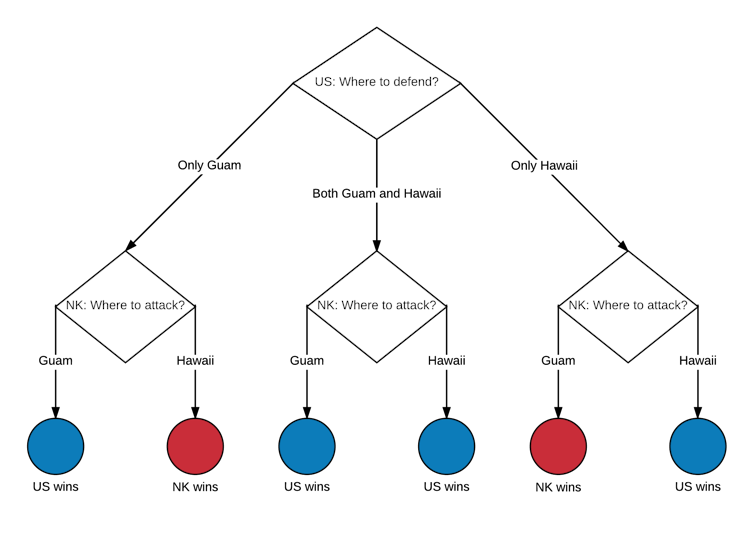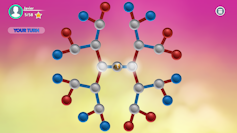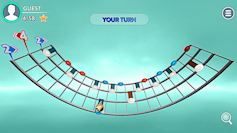Do gamers behave the way game theory predicts they should?
Watching how people play a game against a computer opponent can help identify how humans use – or don't use – game theory principles to make decisions.

When faced with a decision, people have varying ways of analyzing the choices. Give many people the same information, and they’ll all think about the situation differently, and often will choose slightly different options. As economists, we want to learn more about how people perceive and solve problems – including what sorts of situations are too difficult for people to analyze well.
Of particular interest is how people act in situations with two decision-makers whose choices influence each other. These can be extremely common events like choosing how to dress on a first date, commercial options like setting prices or trade policies or even choices with global repercussions such as threatening to use nuclear weapons.
Our research has involved asking people to play a smartphone game presenting simplified versions of these situations; they have fun, and we gather data about how they make decisions. What we learn will help us and other researchers develop better theories of human behavior and problem-solving, which can help people make better decisions, governments design better policies and businesses make better managerial choices.
Simulating choices
The game, which we call “Blues and Reds,” presents a more basic example of a potentially complex situation. Take, for instance, the potential for war between the U.S. and North Korea. One way to analyze the countries’ interactions is through the economic field of game theory – in which a situation is presented as a series of interrelated choices.
A simple simulation might imagine, for instance, that North Korea has two potential targets, Guam and Hawaii, but only enough military power to attack one. And the scenario might be constructed so that a successful attack on just one of them would deliver a devastating defeat for the U.S. and an incredible victory for North Korea. But the U.S. gets to choose how to defend its territory. In this simplification, economists would imagine there are three choices for the U.S.: send all its defense to Guam, send everything to Hawaii or split defenses half and half between the two.
Game theory suggests creating a diagram called a tree, indicating all the choices and the potential outcomes.

This type of game theory analysis provides the opportunity to use a concept called “backward induction” – looking to future options to guide choices in the present. In this case, the U.S. makes its defense decision, and then North Korea chooses where to attack. A quick look at the chart indicates clearly that if the U.S. defends only one location, North Korea will attack the other, and the U.S. will lose. The only way the U.S. can win in this simulation is if it defends both places.
However, like U.S.-North Korean relations, real-life interactive scenarios are much more complex, with more rounds of choices, more options and more players.
A look at our game
Our game “Blues and Reds” doesn’t present players with problems carrying that much geopolitical significance. But it does allow us to study how people actually behave when using trees and backward induction. Research tells us that people struggle when trees become too large. (It’s hard to blame them: The decision tree for the relatively basic game of chess is so big that if every potential option were marked by a single atom, there are not enough atoms in the observable universe to complete it.)
“Blues and Reds” consists of 58 puzzles against the computer. In each puzzle, the player moves a ball, which we call a “RoboToken,” one step through a puzzle, and then the computer responds. The player wins if the game ends with the RoboToken on a blue circle as opposed to a red one. In more complex levels, player and computer have multiple rounds of choices to make.
The game presents two different puzzles, which our players have nicknamed “snowflakes” and “rails.”

“Snowflake” puzzles show the trees themselves, and let the player and the computer take turns moving the RoboToken from one step in the tree to the next. Players who win these puzzles do so by using backward induction, looking at possible outcomes and making choices that maximize their chances of getting to a blue circle. Tracking how many players succeed lets us know how capable they are of making good decisions when information is presented in this way.

“Rails” puzzles, on the other hand, are the same sorts of situations but depicted in a more complex way. As in the case of snowflakes, this is a turn-based puzzle with the player aiming to land the RoboToken on a blue node. As people work on those puzzles, we can evaluate whether they actually perceive these problems as trees.
Why mobile experiments?
Constructing a research experiment as a game makes pretty obvious sense when studying game theory. But making it a mobile app also dramatically improves our research quality. The population being studied can be much larger than standard study pools: Another mobile research game app, “Sea Hero Quest,” which helps with dementia studies, has been used by more than 3 million players. And people who want to participate in the research don’t have to live near where we work or take time out of their busy lives. They can just download a game to play in their spare time.
Our study can include anyone in the world who has a smartphone. Already, we have more than 10,000 users from more than 100 countries. We’ve only begun to analyze the data they’ve provided, but we expect to learn which puzzles are more difficult to solve (as measured by the percentage of users who win a puzzle) and, more importantly, what mathematical aspects make them easier or harder. For instance, we suspect that snowflake puzzles are easier than the rails, but we want to learn why.
As we refine our research, we can update the game to deepen our findings. We’re just at the beginning of finding out what we can learn from this game. Together, we and our game players will help decide the best ways to use mobile technology for social science research.
The authors do not work for, consult, own shares in or receive funding from any company or organization that would benefit from this article, and have disclosed no relevant affiliations beyond their academic appointment.
Read These Next
The ‘sacred’ pledge that will power the relaunch of far-right militia Oath Keepers
Founder Stewart Rhodes says he will relaunch the group, serving as an important outlet for thousands…
AI agents arrived in 2025 – here’s what happened and the challenges ahead in 2026
AI systems began a major shift in 2025 from content creators and chatbots to agents capable of using…
Who thinks Republicans will suffer in the 2026 midterms? Republican members of Congress
The president’s party almost always loses seats in the midterms. More than two dozen Republican House…






